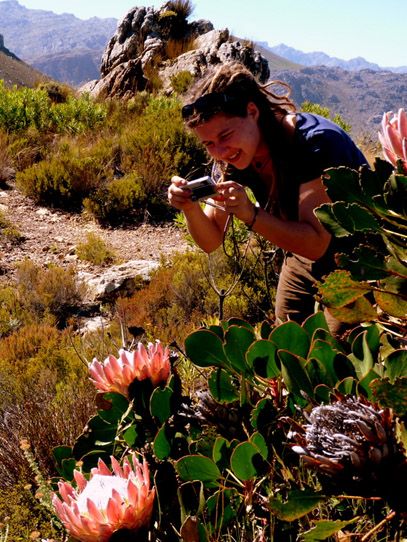
Are ornamental plants threatening our native biodiversity? The impact of climate change on the naturalization potential of non-native garden plants
I am working on a joint project with the ‘Deutsche Umwelthilfe’ in Radolfzell called: KLIBIKOM - Climate adaptation in the green and open space planning of a municipality; based on the commune Radolfzell. In my part of the project, I deal with the question of ornamental plants stating a threat to native biodiversity and the climate dependant naturalization potential of non-native species.
Our aim is to group ornamental plants into different naturalization potential categories depending on:
- The extent of naturalization worldwide, using the GloNAF (Global Naturalized Alien Flora; van Kleunen et al. 2015) database in order to match species occurrence in the world.
- How well a species fits into the climate of the lake Constance region and its predicted future climate.
- The planting abundance of a species in the commune on urban and private spaces.
By doing this, we will be able to formulate an advanced warning list of ornamental plants that might become the next generation of naturalized neophytes in the region.
***
Ich arbeite in dem Verbundprojekt KLIBIKOM (Klimaanpassung in der Grün-und Freiflächenplanung einer Kommune; am Beispiel der Stadt Radolfzell) mit der Deutschen Umwelthilfe in Radolfzell. In meinem Teil des Projekts beschäftige ich mich mit der Frage, welche Zierpflanzen in Zukunft die einheimische Biodiversität bedrohen könnten. Speziell geht es dabei um das Einbürgerungspotential gebietsfremder Arten unter Klimawandel.
Unser Ziel ist es, Zierpflanzen anhand von drei Kriterien in verschiedene Einbürgerungspotential-Kategorien einzuteilen:
- Das Ausmaß der weltweiten Einbürgerung einer gebietsfremden Zierpflanze anhand der GloNAF Datenbank (Global Naturalized Alien Flora; van Kleunen et al. 2015).
- Die klimatische Eignung einer Art für den Bodenseeraum und seinen Klimawandelprognosen.
- Die Anpflanzungshäufigkeit einer Art in der Kommune auf städtischen und privaten Flächen.
Dadurch sind wir in der Lage eine Vorwarnliste jener verwendeten Zierpflanzen zu erstellen, die die nächste Generation eingebürgerter Neophyten in der Region werden könnte.
